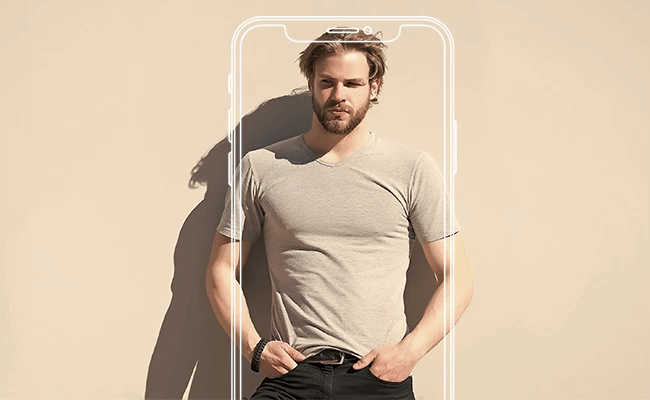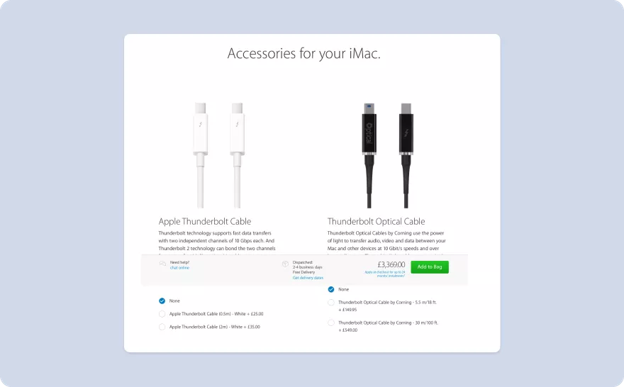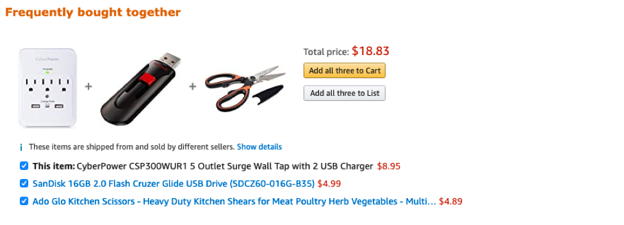
- October 14 2022
Boost Revenue with 5 Cross-selling Strategies
Customers often only come for one product but buy more if they see the right products. However, they can’t ask a salesperson for help. So, how do you show them what they may also like? Enter cross-selling, a sales technique that helps you deliver custom recommendations based on previous orders or what customers add to their cart. Cross-selling opens the door to more selling opportunities for ecommerce brands like yours.
Think it can help you boost order value and revenue? Dive deep into the best ecommerce cross-selling tips and examples in this article to get started.
What is cross-selling?
Cross-selling is a sales method that persuades customers to buy complementary or related products along with their original purchase.
You can, for instance, entice shoppers who’ve just purchased a new pair of shoes to also buy some high-quality socks to go with them.
Sometimes, businesses confuse cross-selling with upselling—but that’s a big mistake. Let’s find out why.
Cross-selling vs. Upselling
The main difference is that cross-selling convinces customers to buy complementary add-ons, while upselling convinces them to upgrade from what they’ve bought or are buying.
Cross-selling encourages customers to make additional purchases that go well with their original purchase. Upselling shows value-adds and benefits to sell a more advanced, expensive product than what the customer originally has in mind.
They both aim to increase the total order value, they just do it in different ways. Now, onto how cross-selling works.

How does cross-selling work?
Cross-selling works by showing dynamic suggestions based on customers’ purchase behavior and history.
Imagine a customer buying a laptop. You can use the shopping cart page to recommend device insurance or computer peripherals like a mouse, keyboard, and cables. If you take it up a notch and offer a good deal on the peripheral bundle, you’re likely to see an increase in order value.
Wondering what else can cross-selling do apart from increasing the order value? Let’s find out.
What is the importance of cross-selling?
Often, shoppers don’t know what they want until you show them. Suggesting add-ons is a great way to help them find the right items. But, there are other benefits too.
Increase customer loyalty
When you help customers find products they love, you make them happy. Once these happy customers start trusting you, they help you fight customer churn with positive reviews and word-of-mouth referrals.
Retain customers and boost ROI
Retention is cheaper than finding new customers—a company gets 65% of its business from existing customers. Cross-selling helps you satisfy these existing buyers by showing the right product at the right time.
Make ecommerce shopping convenient
The right product recommendations make online shopping frictionless. When the right products are just a click away, shoppers can save a lot of time. Plus, they get to explore products they love or didn’t know they needed.
Now, let’s look at ways to delight customers with smart cross-selling strategies.
5 Best Tips For Upselling And Cross-selling
You can’t upsell or cross-sell efficiently without a strategy in place. Luckily for you, we’ve curated the best tips to get started.
1. Use smart product recommendations
Your goal with cross-selling is to show customers products you’ll know they’ll love. Personalized product recommendations make that a whole lot easier.
Smart recommendations use various recommendation models to show products based on what customers are looking at to deliver hyper-relevant product suggestions. Smart recommendations effectively uplift conversion with three strategies:
- Shop the look: make styled model shots from PGC and UGC shoppable.
- Similar look: show visually similar items to the ones customers are looking at
- Complete the look: recommend complementary outfits or products to boost order value.
A couple of examples of product recommendations to help you get started:
- Show suggestions based on browsing history
- Offer custom recommendations based on items in the cart
- Show new products that you feel customers may like
You can show these suggestive selling techniques on the home page, product pages, and shopping cart or thank you pages. This helps you cross-sell at many key customer touchpoints.

2. Leverage web push notifications
Push notifications are changing how people choose what they shop. These highly visible real-time notifications let you alert shoppers about product promotions and new launches.
Start by segmenting subscribers based on their previous purchases or product interests. Then, send them timely, relevant product recommendations that either pair well with their last purchase or suit their shopping trends.
3. Retarget customers with ads
It’s common for customers to abandon carts and then completely forget about them. Using retargeting ads on Facebook and Instagram is a great way to bring them back to purchase what they added to the cart.
Start by showing items that they looked at earlier or complementary products that may interest them. This retargeting will help you to engage with those customers and bring them back to your website.
4. Schedule follow-up emails
Emails are primal real estate for letting customers keep in the loop about products similar to what they purchased. You can also use emails to alert them about new arrivals or products they may like.
Ecommerce brands also include product recommendations in post-purchase emails or abandoned cart emails. Regardless of what you choose, remember to offer products that match customers’ persona.
5. Send targeted SMS
Direct communication can trigger an immediate purchase. So, you better start using SMS campaigns to send personalized product recommendations.
For example, send custom discount codes for items they last purchased or time-bound click-to-buy links for limited-time discounts. If done right, you’ll see them soon on your website.
Now, dive deep into these real-life examples of how cross-selling works.
3 Examples of cross-selling strategies
These examples show you how to maximize customer satisfaction and boost order value.
1. Showpo masters cross-selling with smart recommendations
Showpo, the Australian fashion ecommerce brand, was struggling to show customers what they want. As a result, their sales took a hit. Today, they use ViSenze’s Smart Recommendations to help customers quickly find products. Plus, they show similar products on their site and mobile app, thanks to AI-driven Similar Recommendations by ViSenze. Together, these changes help Showpo boost conversion by 10%.
2. Apple’s passive cross-selling
The American multinational technology company Apple uses cross-selling strategies to passively push products to customers. Someone buying a product will see relevant suggestions based on what they’ve added to the cart.
Apple’s strong brand game helps in recognizing the products. Plus, the visual simplicity appeals to those who need those add-on items.

3. Amazon’s related and frequently bought items
Amazon does an excellent job of making money with cross-selling. Every time you land on their website, you’ll see sections like frequently bought together, related to items you’ve viewed, and so on.

These sections do a pretty good job of influencing customers’ purchase habits and suggesting items to purchase-ready buyers. People feel like they’re making these additional decisions themselves when they choose items from what they see.
Cross-selling boosts your revenue
Cross-selling can be tough, but it’s a whole lot easier when you know what you’re doing.
Use these best practices and strategies to increase the average order value on your ecommerce store. It’s a great opportunity for businesses to give consumers products they want—whether they know it yet or not.
Ready to make your customers feel like they’re winning? Sign up for a ViSenze demo to boost conversion and revenue with AI-driven product discovery.

